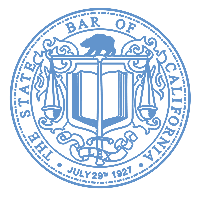Train collisions at rail crossings between trains and automobiles or pedestrians sadly still occur despite safety measures in place. These incidents often turn tragic and result in loss of life in addition to extensive property damage. However, technology advancements and infrastructure improvements provide promising solutions to further prevent and reduce the risk of severe collisions at rail crossings.
Evaluating Crossing Risk: Diagnosing the Problem Areas
The first priority around enhancing safety at rail crossings lies in diagnosing the highest risk areas. Factors like crossing design, signage visibility, terrain, vegetation overgrowth, and prior incident history play pivotal roles in evaluating a crossing’s inherent risk. Transportation departments maintain databases with detailed profiles documenting the myriad of crossings under their jurisdiction to prioritize funding. Key details like average daily vehicle and pedestrian traffic, train volume and speeds, and specific design concerns help rank the crossings most in need of upgrade investments. Ongoing diagnostic review ensures the data guiding these risk rankings stays current in the face of changing transportation patterns.
Infrastructure Enhancements: Implementing Physical Safeguards
Once vulnerable high-risk crossings are identified, infrastructure enhancements provide physical safeguards to reduce the possibility of collisions. Common improvements include installing median barriers to prevent drivers from going around lowered gates, using four quadrant gates to block the full crossing, improving sightlines by clearing vegetation and re-grading, adding pathways for pedestrians apart from the tracks, tweaking crossing angles, upgrading warning signals, and using signage showing specific crossing emergency contact numbers. Construction challenges and costs associated with some upgrades mean taking advantage of scheduled repair projects as opportunities to improve safety features at reasonable marginal additional expenditure.
Advanced Technology: Alert Systems and Autonomous Controls
In tandem with physical enhancements, advanced technologies show increasing promise to actively alert drivers and control vehicles to avoid the possibility of collisions. In-vehicle auditory alerts when approaching rail crossings offer early warnings to get motorists’ attention. Connected vehicle systems allow trains to communicate with cars to provide even more pinpointed alerts based on precise locations. And autonomous emergency braking now actively detects impending collisions and halts vehicles when drivers fail to respond to warnings. Rail operators also increasingly implement computer warning systems to activate anti-collision mechanisms on trains during incidents of unauthorized access onto tracks. Continued innovation around machine vision solutions also will open further collision avoidance potential.
Ongoing Vigilance: The Vital Human Element
While infrastructure improvements and technology controls key roles in improving rail crossing safety, the unavoidable human element means ongoing public education and vigilance remains vital. Traffic engineering departments continually upgrade crossing markings and sign placements to enhance visibility and motorist awareness. Targeted public service messaging reminds citizens of the continued severe risks at rail crossings along with safe crossing rules and contact methods for reporting issues. And proactive community engagement programs bring stakeholders together to foster education partnerships and open dialogue to share challenges and solutions. Combining infrastructure and technology with public information provides a holistic approach to improving safety over the long run.
The tragic loss from preventable collisions at rail crossings means finding comprehensive solutions remains an imperative public priority. Thankfully, infrastructure enhancements, innovative technology controls, and ongoing community engagement provide grounds for optimism in working toward reducing risks at vulnerable rail crossings.
However, accidents can and do happen. If you have been injured, or you have lost a loved one due to a collision at a rail crossing, contact the Binder Law Group to see if you have a case.
Visit us at 16633 Ventura Blvd. #602 Encino, CA 91436.
Call now for a free consultation on (818) 659-8588.











